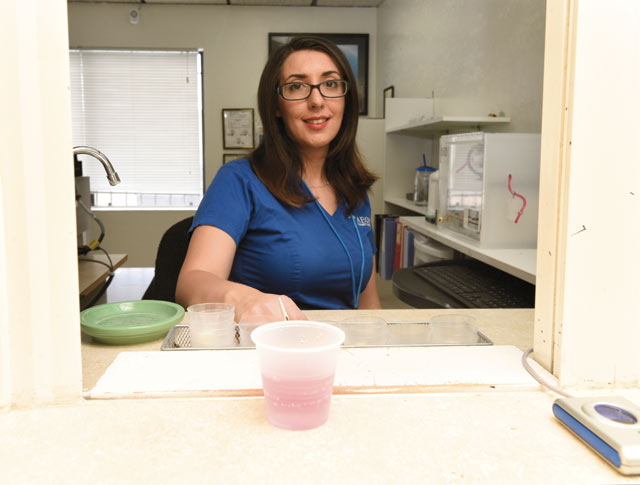Methadone Program Blasted
Number of People Treated Jumps; So Do Complaints

One of the county’s two methadone clinics came under blistering attack at Tuesday’s Board of Supervisors meeting, just one week before Santa Barbara’s $3.6 million annual contract with the private service provider was scheduled for renewal. County Supervisor Peter Adam led the charge, suggesting, “There’s a lot more willful ignorance of this methadone thing than meets the eye.”
Methadone is a highly addictive but federally regulated opiate that’s long been given to heroin addicts in lieu of their drug of choice on the grounds it produces a less intense high and allows users to lead more functional lives. Adam, however, challenged the wisdom of substituting one addiction for another. Alice Gleghorn, the county’s Department of Behavioral Wellness chief, said she first began administering methadone programs 20 years ago in San Francisco and quickly discovered how effective they were. Gleghorn claimed that 80 percent of the county’s methadone patients who manage to stay in treatment 90 days are free of illegal drugs and that 25 percent successfully complete treatment.
For the past 17 years, the County of Santa Barbara has contracted with a private methadone treatment and counseling service — Aegis — and is now funneling millions of federal dollars to provide daily fixes to about 700 patients countywide. Aegis runs two clinics, one in Santa Barbara and the other in Santa Maria. In the past two years, the number of methadone patients has increased by 180, in part because heroin use has skyrocketed and in part because the Affordable Care Act now covers methadone treatment.
The Santa Maria clinic was the target of scorching criticism from a Santa Maria city councilmember, a planning commissioner, a McDonald’s owner, and a homeless shelter operator for a host of reasons. Councilmember Bob Orach expressed “grave concern” about Aegis’s downtown location and said the licensed medical clinic needed to move. Drug addicts, he said, were spilling over into the surrounding neighborhood. Ted Maddox, who owns the McDonald’s across the street, complained of needles in his bathroom and in his bushes. Sylvia Bernard, executive director of the Good Samaritan shelters, objected that most people who are given methadone stay on methadone. She referred to babies being born addicted to the opiate and having to go through withdrawal. Methadone renders many parents unfit to care for their children, she charged, and questioned how many of the county’s methadone patients “have open child welfare cases.”
Gleghorn acknowledged that the prospect of neonatal withdrawal was indeed alarming, but not as alarming as pregnancies terminating during cold-turkey withdrawals. She stressed that Aegis provided counseling as well as methadone and that the program is employing time-tested treatment modalities. She acknowledged most patients stay in the program 40 months, but said 40 percent reported an increased number of days working and improved family and social life. In an interview before the meeting, her assistant John Doyel noted that heroin is among the most addictive drugs on the planet and alters the fundamental brain chemistry of the users. For that reason, he said, relapse among heroin users is notoriously high.
Aegis CEO Alex Dodd was on hand and expressed a willingness to seek other locations, but he noted that the licensing requirements are intense and not something that can be done quickly or easily. Supervisor Salud Carbajal expressed support for the methadone program, saying, “I’ve known people who were methadone dependent, but that’s been the one avenue that’s given the stability to function in their lives.”
Tuesday’s exchange was informational only, triggered when Supervisor Adam peppered Gleghorn with questions about the program at a previous board meeting. Some of those questions, he complained, remain unsatisfactorily answered. He argued the county needs to establish stricter performance benchmarks for Aegis if it is to remain the county’s sole service provider. He also suggested that the length of the Aegis contract be whittled down from three years to one. It’s unlikely he has the votes to make that happen, but it’s equally unlikely that the issue has been laid to rest.



